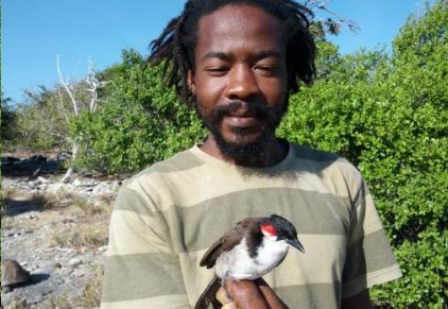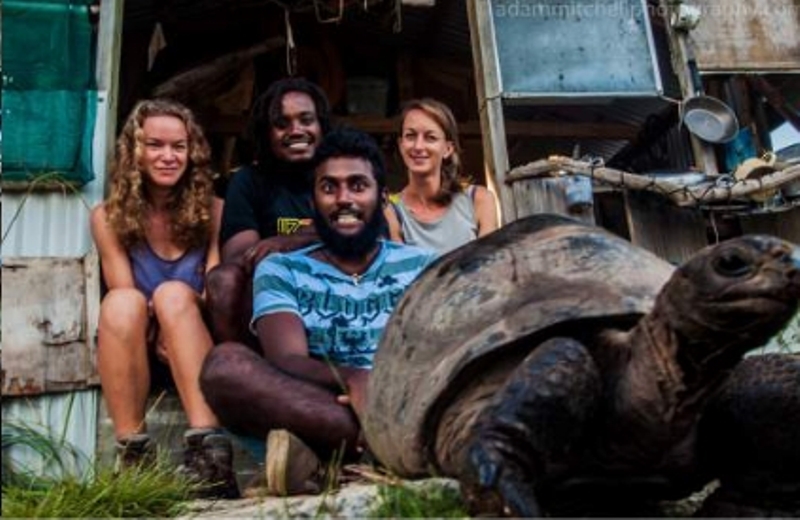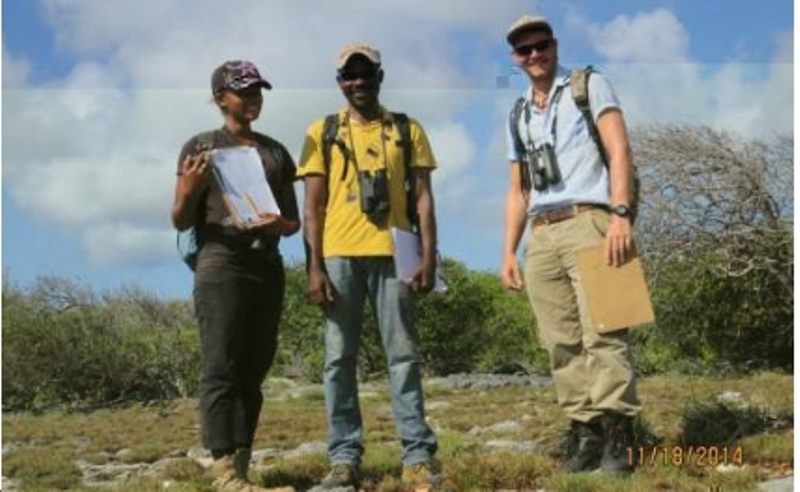Aldabra reclaims title as largest tropical island free of introduced birds |04 September 2017

Hot on the heels of January’s announcement of the successful eradication of introduced red-whiskered bulbuls and Madagascar fodies from the island of Assumption, the Seychelles Islands Foundation (SIF) is delighted to follow this up with news of more invasive species success, this time from Aldabra.
After a final monitoring trip the Aldabra team have confirmed that there are no Madagascar fodies in the formerly invaded region of the atoll, so Aldabra can once again be considered entirely free of invasive birds!
Aldabra held this status until 2012, when both Madagascar fodies and red-whiskered bulbuls were discovered in a little-visited region of the atoll, Takamaka, during monitoring to confirm the goat eradication. The conclusion of one invasive species eradication therefore led immediately into an emergency race against time to remove the introduced bird species before they became too numerous and widespread for eradication to be feasible.
The most severe threat of the new introductions was to Aldabra’s endemic landbirds. Aldabra has its own endemic species of fody, and a subspecies of Madagascar bulbul; both faced risks from the new arrivals, including hybridisation, pathogen transmission and competition for food.
Fortunately, emergency funding was sought and secured from Unesco very quickly, a new field station was set up at Takamaka, and over the following 3 years, intensive eradication efforts were carried out with a team of 4–6 people. The red-whiskered bulbul ‘population’ was found to be only a single individual, which was culled in 2013.
Madagascar fodies, however, were well-established and took three seasons of dedicated work to remove. The eradication work was particularly tricky because Madagascar and Aldabra fodies are very difficult to distinguish outside the breeding season; even during the breeding season it can be a challenge to identify non-breeding individuals correctly from afar.
Most of the eradication was therefore done seasonally, from November to April each year, using mist-nets, so the team could confidently distinguish the invasive fodies from the endemic Aldabra species. Luckily, the invasive fodies had not spread beyond the Takamaka region so all eradication work could be done from the new field station. The last known individual was culled in January 2015.
Since then, the Aldabra team has carried out two monitoring trips per breeding season to survey the whole area and carry out extensive observations.
Not one of the four trips has detected a fody other than the endemic Aldabra species and, with this last visit to the area in March, more than two years after the last Madagascar fody was shot, we are now confident that the eradication was a success.
More than 200 Madagascar fodies were culled in this eradication. We encountered quite different challenges compared to the other bird eradication projects SIF has implemented, which could easily have threatened chances of success, but we were lucky to be able to act quickly and complete the eradication in a relatively short time with a dedicated team (several of whom had first been trained on the Assumption bird eradication). The project also benefitted from being combined with research from the outset.
Samples collected during the first season of work confirmed our concerns that Madagascar fodies were hybridising with Aldabra fodies. The research also confirmed that the Madagascar fodies on Aldabra came from the Assumption population and that their presence on Aldabra
pre-dated the eradication efforts on Assumption.
All of this information was critical to guide management decisions for subsequent seasons.






